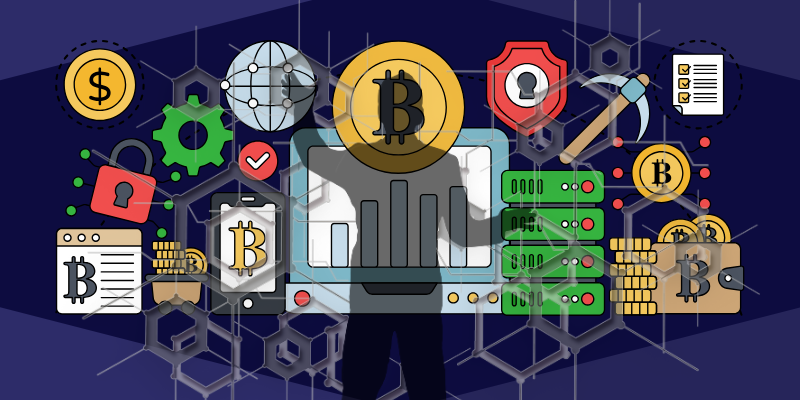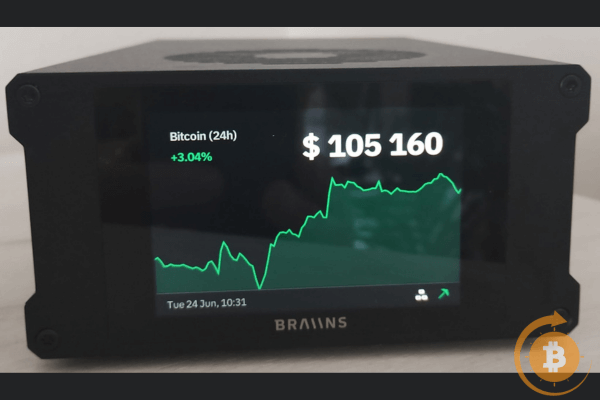Learn Bitcoin terms with our Bitcoin glossary for beginners, covering 50 essential concepts like HODL and blockchain.

Bitcoin Glossary: 50 Key Terms
Table of Contents
- Address
- Altcoin
- ASIC
- Bear Market
- Bitcoin
- Bitcoin Halving
- Bitcoin Pizza
- Block
- Block Height
- Block Reward
- Blockchain
- Bull Market
- Cold Storage
- Confirmation
- Cryptography
- Cypherpunk
- Decentralized
- Difficulty
- Double Spending
- DYOR
- Fiat Currency
- FOMO
- Fork
- Genesis Block
- Hard Fork
- Hash
- Hash Rate
- HODL
- Hot Wallet
- KYC
- Market Cap
- Mempool
- Mining
- Mining Pool
- Node
- Nonce
- Paper Wallet
- Peer-to-Peer (P2P)
- Private Key
- Proof of Work (PoW)
- Public Key
- Satoshi
- Satoshi Nakamoto
- Seed Phrase
- Soft Fork
- Transaction Fee
- Wallet
- Whale
- Whitepaper
- 51% Attack
Bitcoin, the world’s first decentralized cryptocurrency, has introduced a revolutionary way to transfer value without banks or governments. For beginners, the unique terminology can be daunting. This glossary explains 50 key Bitcoin terms in a simple, beginner-friendly way, arranged alphabetically, to help you navigate the exciting world of Bitcoin with confidence.
1. Address
A unique string of letters and numbers used to send or receive Bitcoin, similar to an email address for transactions.
2. Altcoin
Any cryptocurrency other than Bitcoin, often designed with different features, goals, or technologies (e.g., Ethereum, Litecoin).
3. ASIC (Application-Specific Integrated Circuit)
Specialized hardware designed for mining Bitcoin, offering high efficiency but limited to specific tasks.
4. Bear Market
A market trend where Bitcoin prices are falling, often leading to negative sentiment among investors.
5. Bitcoin
The first decentralized cryptocurrency, created in 2009 by Satoshi Nakamoto, used for peer-to-peer transactions without intermediaries.
6. Bitcoin Halving
An event occurring every 210,000 blocks (roughly every 4 years) that halves the reward miners receive for adding new blocks, slowing the creation of new Bitcoins.
7. Bitcoin Pizza
The first widely known real-world purchase using Bitcoin, on May 22, 2010, when 10,000 BTC were spent on two pizzas. Celebrated annually as Bitcoin Pizza Day.
8. Block
A collection of Bitcoin transactions grouped together and added to the blockchain.
9. Block Height
The number of blocks in the blockchain, starting from the genesis block (block 0).
10. Block Reward
The amount of new Bitcoin given to a miner for successfully adding a block to the blockchain.
11. Blockchain
A decentralized, public ledger that records all Bitcoin transactions in chronological order, secured by cryptography.
12. Bull Market
A market trend where Bitcoin prices are rising, often accompanied by positive investor sentiment.
13. Cold Storage
Storing Bitcoin offline to protect it from hackers, using hardware wallets like Trezor. These devices keep private keys secure in an offline environment, safeguarding against online threats. For more information, visit trezor.io.
14. Confirmation
The process of a Bitcoin transaction being verified and included in a block on the blockchain.
15. Cryptography
The use of mathematical techniques to secure Bitcoin transactions and protect user privacy.
16. Cypherpunk
An activist or movement advocating for privacy and freedom through the use of cryptography. Cypherpunks influenced Bitcoin’s creation by promoting decentralized and secure systems.
17. Decentralized
A system, like Bitcoin, with no central authority, not controlled by banks, governments, or institutions. Control is distributed among network participants.
18. Difficulty
A measure of how hard it is to mine a new Bitcoin block, adjusted automatically to maintain consistent block times (approximately 10 minutes).
19. Double Spending
An attempt to spend the same Bitcoin twice, prevented by the blockchain’s consensus mechanism.
20. DYOR (Do Your Own Research)
Do your own research – don’t buy Bitcoin based only on tips from Twitter/X, internet, or other sources. Learn about Bitcoin’s technology, network, and purpose before investing.
21. Fiat Currency
Government-issued money (e.g., USD, EUR, GBP, JPY) not backed by a physical commodity, unlike Bitcoin.
22. FOMO (Fear of Missing Out)
The emotional urge to buy Bitcoin due to rising prices, often leading to impulsive decisions.
23. Fork
A change in Bitcoin’s rules (protocol) that creates two different versions of the blockchain, like splitting a road into two paths. A hard fork makes a new, separate cryptocurrency (e.g., Bitcoin Cash), while a soft fork updates the rules but keeps everyone on the same blockchain.
24. Genesis Block
The first block in the Bitcoin blockchain, mined by Satoshi Nakamoto in 2009.
25. Hard Fork
A significant protocol change that creates a new, incompatible version of the Bitcoin blockchain.
26. Hash
A cryptographic function that converts data into a fixed-length string, used in mining and transaction verification.
27. Hash Rate
The total computational power used by miners to process Bitcoin transactions and secure the network.
28. HODL
A slang term originating from a misspelled word “hold” in a 2013 Bitcoin forum post by a user who admitted to being slightly drunk on whisky. It means to keep Bitcoin long-term despite market volatility. Today, HODL is an iconic term in the crypto community, symbolizing strong belief in Bitcoin’s long-term growth.
29. Hot Wallet
A Bitcoin wallet that is connected to the internet, such as an app on your phone, a website, or software on your computer. It’s convenient for quick transactions but less secure than cold storage because it can be vulnerable to hacks or malware.
30. KYC (Know Your Customer)
Regulations requiring exchanges to verify user identities to prevent fraud or money laundering.
31. Market Cap
The total value of all Bitcoin in circulation, calculated as its current price multiplied by its total supply.
32. Mempool
A waiting area for Bitcoin transactions that haven’t been added to the blockchain yet. Think of it like a queue at a bank, where transactions wait for miners to pick them up and confirm them in a block.
33. Mining
The process of using computer power to solve a mathematical puzzle and validate Bitcoin transactions. It’s like trying different keys to unlock a safe: computers test random numbers (nonce) until they find the right one to solve the puzzle. When solved, miners add a new block of transactions to the blockchain and earn a reward. This keeps the Bitcoin network secure.
34. Mining Pool
A group of miners who combine their computational power to increase chances of earning rewards for mining Bitcoin blocks.
35. Node
A computer running Bitcoin software that validates and relays transactions across the network.
36. Nonce
A random number that miners change to solve a puzzle in the Bitcoin mining process. Think of it like trying different keys to unlock a safe until the right one fits, helping miners add a new block to the blockchain.
37. Paper Wallet
A physical document containing a Bitcoin private key and address for secure offline storage.
38. Peer-to-Peer (P2P)
A system where users interact directly without intermediaries, as in Bitcoin transactions.
39. Private Key
A secret code that allows you to access and spend your Bitcoin, like a password.
40. Proof of Work (PoW)
Bitcoin’s consensus mechanism, where miners solve complex puzzles to validate transactions.
41. Public Key
A cryptographic code paired with a private key, used to create a Bitcoin address.
42. Satoshi
The smallest unit of Bitcoin (1 BTC = 100,000,000 satoshis), named after its creator.
43. Satoshi Nakamoto
The pseudonymous creator of Bitcoin, who published its whitepaper in 2008 titled “Bitcoin: A Peer-to-Peer Electronic Cash System.” Nakamoto introduced the concept of a decentralized digital currency, solving the double-spending problem without needing banks or governments. Nakamoto mined the first Bitcoin block (genesis block) in 2009 and communicated with early developers until 2010, then disappeared. Their true identity remains unknown, sparking speculation about whether it’s one person or a group. Nakamoto’s vision laid the foundation for the cryptocurrency revolution.
44. Seed Phrase
A set of 12–24 randomly generated words used to back up and recover a Bitcoin wallet. These words act like a master key to access your Bitcoin, so they must be kept secret and stored safely (e.g., written on paper and kept offline, or engraved on metal for fire resistance). Never store them online, take photos of them, show them to anyone, or send them to others, as this could lead to your Bitcoin being stolen. Losing them means losing access to your funds.
45. Soft Fork
A backward-compatible protocol update that doesn’t split the Bitcoin blockchain.
46. Transaction Fee
A small amount of Bitcoin paid to miners to process a transaction on the blockchain. Fees vary depending on network demand but typically range from a few cents to a few dollars (e.g., 1,000–50,000 satoshis or $0.10–$5). Higher fees can speed up transaction confirmation.
47. Wallet
Software or hardware that stores Bitcoin private and public keys for sending/receiving funds. We recommend hardware wallets like Trezor for higher security, as they keep keys offline, protecting against hacks. For more information, visit trezor.io.
48. Whale
A person or entity holding a large amount of Bitcoin, capable of influencing market prices.
49. Whitepaper
The 2008 document by Satoshi Nakamoto outlining Bitcoin’s design and purpose.
50. 51% Attack
An attack where one entity controls over half of Bitcoin’s mining power, potentially allowing them to manipulate transactions (e.g., double-spending). Today, this is practically impossible due to Bitcoin’s massive network size, requiring enormous energy, expensive hardware, and billions of dollars in costs, making it unfeasible for attackers.
This glossary provides a solid foundation for understanding Bitcoin’s key concepts. Whether you’re curious about mining, wallets, or market trends, these 50 terms will help you navigate the exciting world of Bitcoin. Happy learning!



